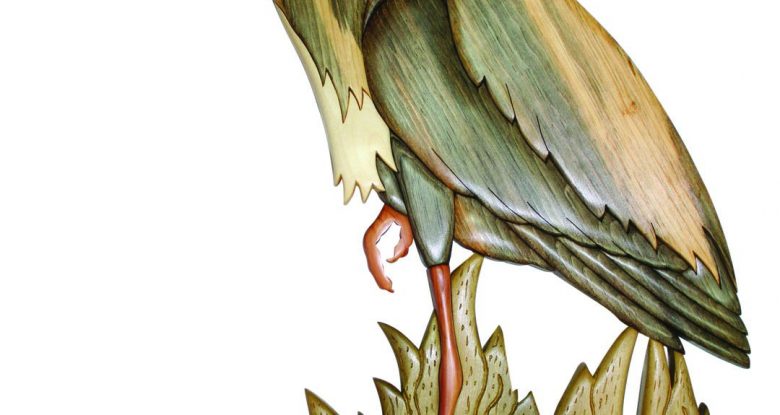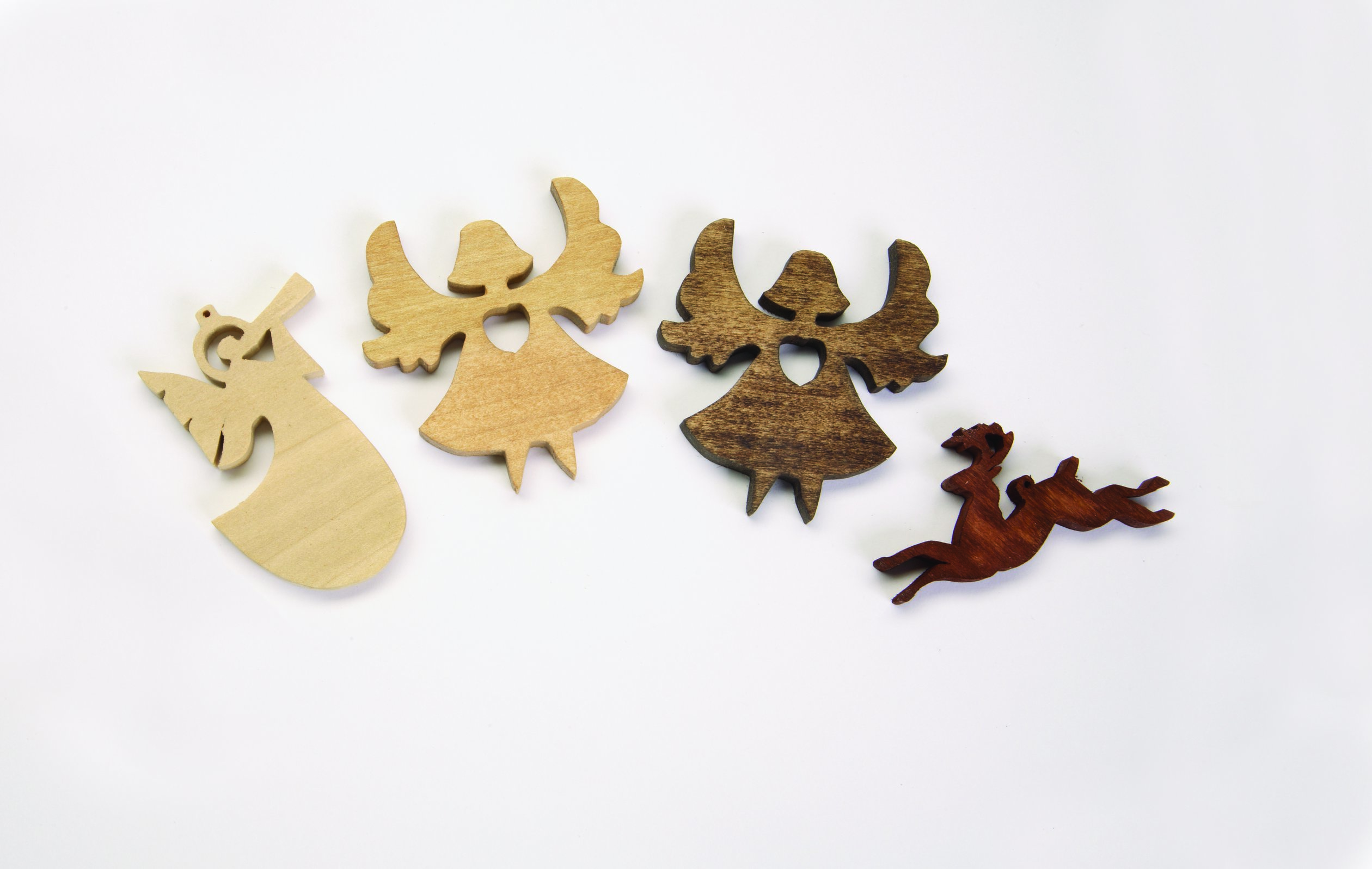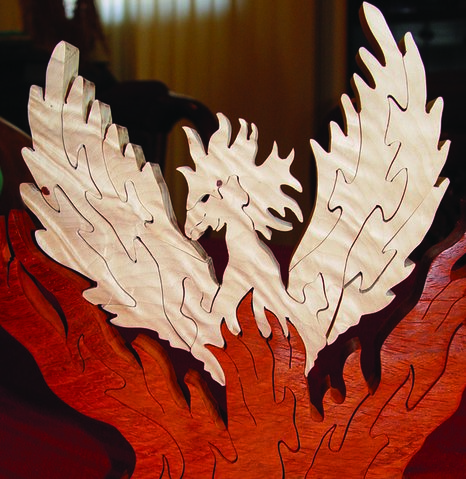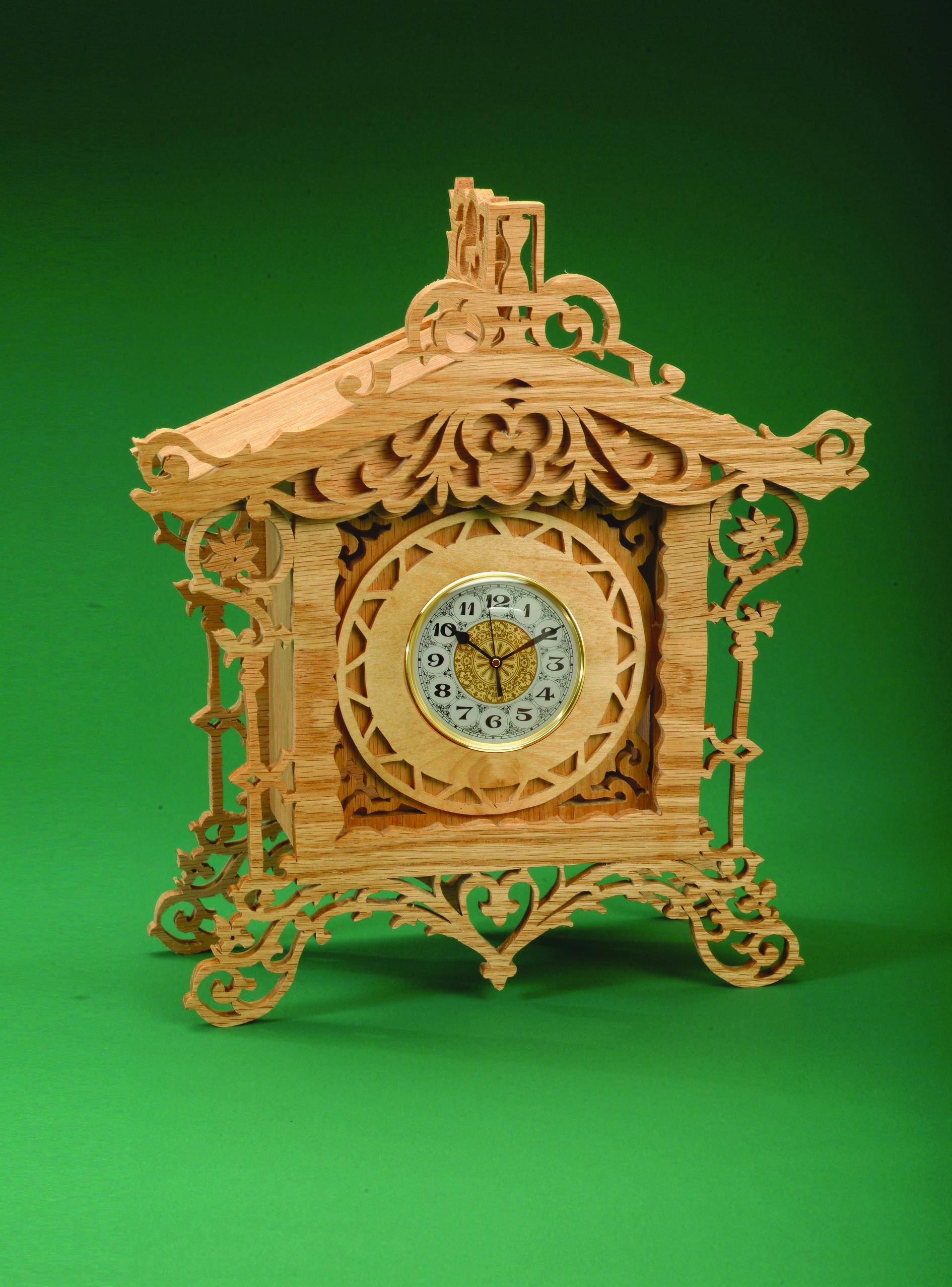Beetle-damaged wood is a boon for intarsia artists
by Janette Square
This article was first published in issue 35 of Scroll Saw Woodworking & Crafts.
Blue pine, sometimes called denim pine, isn’t an actual species of wood. Blue pine is a term coined to describe pine lumber, usually from lodgepole pine trees, that has been infected and killed by the mountain pine beetle.
Lodgepole pine is found in the northwestern United States and western Canada. The mountain pine beetle attacks sick or weak trees. The beetle introduces a fungus to the tree as it bores through the bark. The end result is the tree’s death. The fungus causes the blue staining throughout the tree. It is not a mold that can be planed off the surface.
In recent years, trees have become more stressed, possibly due to drought conditions, and the beetles aren’t dying off because of warmer winter temperatures. This combination has caused widespread beetle infestations resulting in a higher quantity of infected trees.
Working with Blue Pine
Long thought to be undesirable in the lumber industry, blue pine is basically the same as regular pine. Studies have been done and few differences with regard to strength and other lumber characteristics have been found. Blue pine does tend to be less prone to warping. It works well with machine and hand tools and is quickly gaining popularity for use in cabinet making, furniture, flooring, and log homes.
It is easy to cut with a scroll saw and shapes quickly. Care must be taken when sanding because it is a soft wood, and be sure to wear a dust mask.
I frequently use blue pine in intarsia. There are many variations in the coloring, from slight gray streaking to solid gray. One thing to keep in mind is the beetle holes. Some boards have virtually no holes in them at all, but others are full of holes. Depending on your project, you will have to select the boards carefully. I save the pieces with the most beetle damage to use for distressed looking areas, such as the pier a pelican would sit on.
The most frustrating aspect of working with blue pine is shaping a piece and having a beetle hole appear out of nowhere. These holes can be filled by mixing wood glue with sawdust collected from the piece of wood containing the hole. I have learned to embrace the natural beauty of the wood and accept the holes as part of the outcome.
Finishing Blue Pine
Blue pine absorbs finish like a sponge. You can use a wood conditioner prior to finishing; however, blue pine doesn’t absorb finish as unevenly as ordinary pine because the lumber is more consistently dry throughout. Regular pine will typically have both dense and soft areas within one board. Varnish and shellac are good choices for a finish because they build a film on the surface rather than soaking into the wood like oil finishes.
Summary
Although the devastation of pine forests is reaching epidemic proportions, the silver lining for woodworkers is that blue pine should become more readily available and easier to find. I recommend going to your local lumber yard and requesting it. The higher the demand, the easier it will become to find. If you don’t have a supplier in your area, you can usually find blue pine on the Web. One source is The Handsome Woodman, 360-260-6908, www.thehandsomewoodsman.com.
Discuss this material on the Scroll Saw Woodworking & Crafts forums.









